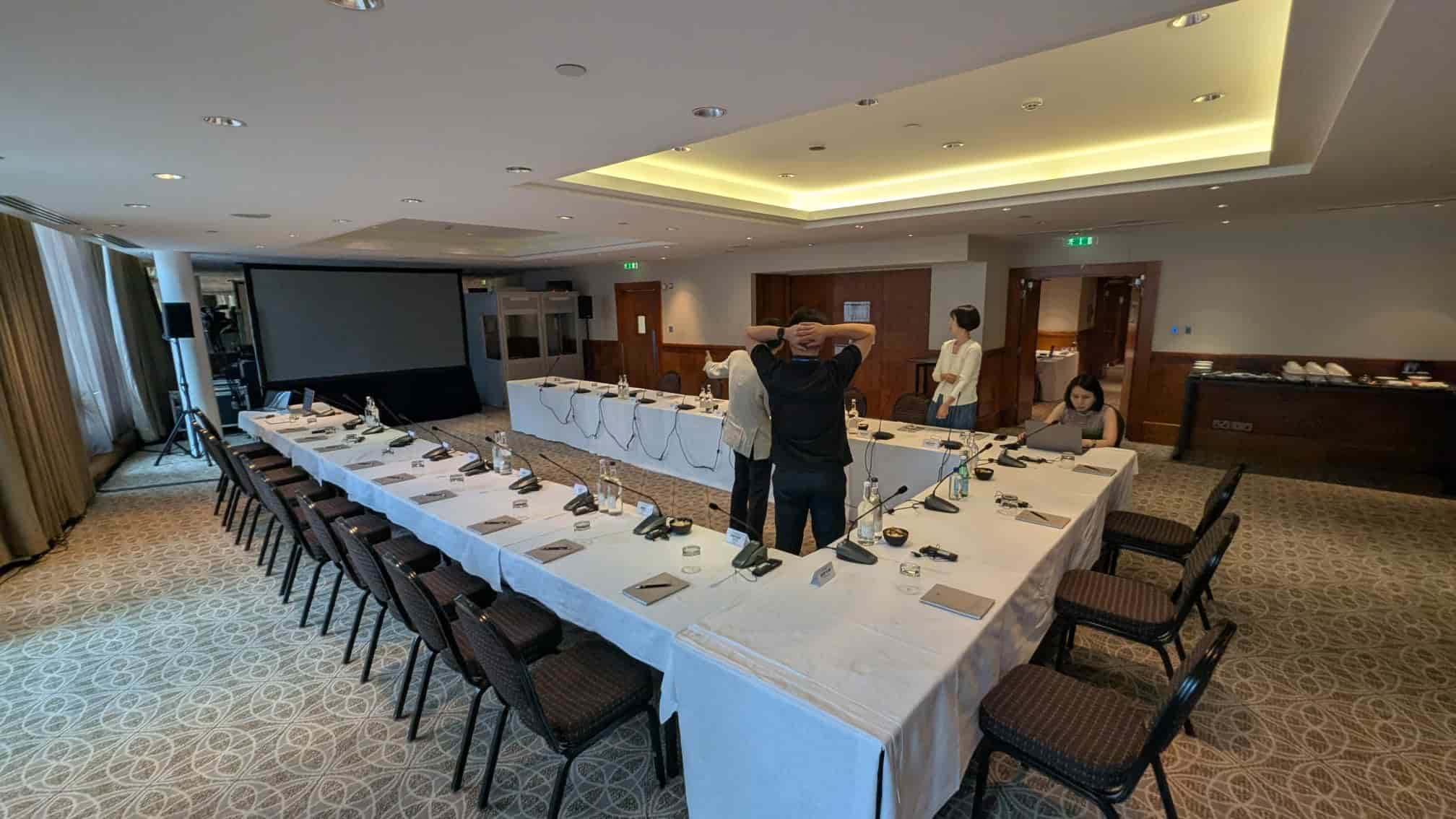Putting together an international conference, a multilingual business summit, or a high-profile government meeting? Then you already know one thing: language should never get in the way of your message.
That’s why interpretation equipment isn’t just another box to tick on your list. It’s a vital part of your event’s success. With so many systems, services, and providers out there, how do you know where to begin?
This guide walks you through everything related to interpretation equipment rental to make your next event a multilingual success.
Start With Your Event’s Needs (Not The Gear)
Ask yourself key questions before diving into kit options, cables, and consoles. This will help you narrow down the kind of setup you need and save a lot of back-and-forth later on.
Who’s Coming And What Do They Speak?
- How many people will need interpretation?
- Which languages are required?
Your answers will help determine how many receivers, headsets, and interpreter booths are needed.
Where’s The Event Happening?
- Is your venue a small boardroom or a large hall?
- Are there thick walls or other tech running that could interfere with RF signals?
These details affect whether Infrared (IR) or Radio Frequency (RF) transmission systems are a better fit.
In-Person, Virtual Or Hybrid?
A live audience? Delegates joining online? Maybe both?
If you’re running a hybrid event, you might need a Remote Simultaneous Interpretation (RSI) platform alongside the physical equipment.
Is Security Important?
Handling sensitive info? Then, IR systems might be your best option since their signals don’t go through walls, making them more secure.
Breakdown Of The Must-Have Interpretation Equipment
Let’s unpack the gear you’ll likely hire and what it all is.
Interpreter Booths
These are soundproof spaces where interpreters can work without noise distractions.
- Go for ISO-compliant booths (ISO 4043 for mobile ones).
- Full-size booths offer better sound isolation.
- Tabletop booths are great for smaller events or tighter budgets.
Interpreter Consoles
This is the control centre. Interpreters use these to select audio channels, talk to the technician, or mute their mic.
- Look for consoles from Bosch, Williams Sound, or Listen Technologies.
- Relay interpretation support is essential if you’re working with multiple languages.
Transmitters And Receivers
The backbone of it all. Transmitters send the translated audio, and receivers let attendees listen in their preferred language.
- Digital systems are clearer and more secure than analogue systems.
- RF = good for bigger spaces and flexibility.
- IR = secure and best for indoor-only events.
Microphones
It’s not just about interpretation – clear input matters too. That means:
- Unidirectional mics for presenters (to reduce background noise).
- Lapel or gooseneck mics, depending on speaker movement.
Technical Support
This is where the real expertise comes in. Even the best kit means nothing without the right people behind it.
- On-site technicians to set up, monitor, and fix things instantly.
- For virtual or hybrid setups, ensure there’s remote support for guests and speakers.
How To Choose The Right Rental Partner
So, you’ve got a handle on your needs and know what kit is involved. Now it’s time to find a provider you can trust.
Here’s how to do it.
Step 1: Do Your Research
- Ask around in your network. Referrals from fellow organisers go a long way.
- Look for suppliers who specialise in interpretation services.
- Check their website for real case studies, not just stock photos.
Step 2: Ask Smart Questions
You’re not just hiring equipment. You’re hiring peace of mind.
Here’s what to ask:
Experience
- How long have you worked in multilingual events?
- Can you share testimonials from similar events or venues?
Equipment
- Which brands do you use? Are your booths ISO compliant?
- What’s the battery life and quality of your headsets?
- Do you offer RSI platforms for virtual/hybrid events? Can I see a demo?
Support
- Will we have on-site tech for the full event?
- What happens if something breaks mid-session?
- Do you provide backup gear just in case?
Step 3: Review Proposals Carefully
- Make sure every quote clearly outlines what’s included: number of booths, tech staff, hours of coverage, etc.
- Avoid making decisions based only on price; a cheap kit can lead to expensive problems.
- Always review contracts closely (especially clauses about cancellations, liability, and support).
Hybrid & Remote: The New Normal
In the post-pandemic world, events look different. Many now include virtual elements. That’s where Remote Simultaneous Interpretation (RSI) platforms are more preferable.
These platforms let interpreters work from anywhere, saving you travel costs and offering more flexibility. But they must integrate with your existing event tools like Zoom or MS Teams.
When reviewing RSI options, ask about:
- Delay or lag times.
- Interpreter handover functions.
- Multi-language support.
- Audience access (browser-based, mobile-friendly, etc.).
Make Every Voice Count
Language inclusion isn’t a luxury. It’s a necessity for any professional event aiming to be global, whether it’s closing a deal, delivering research, or sharing policy, every word matters.
Taking time to understand your options, ask the right questions, and partner with the right team will help ensure that every delegate feels heard, no matter what language they speak.At EMS Communication, we provide trusted interpretation equipment for UK events of all sizes, from wireless systems and booths to expert on-site techs. We help you choose the right setup, get everything installed, and support you throughout your event.
